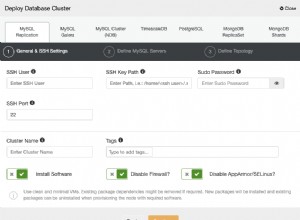Possiamo testarlo in SQLPlus per vedere cosa succede in ciascuna delle 3 situazioni (true, false, null):
set serveroutput on
declare
true_value boolean := true;
false_value boolean := false;
null_value boolean;
begin
if not true_value then --Should not pass
dbms_output.put_line('True Value');
end if;
if not false_value then --Should pass
dbms_output.put_line('False Value');
end if;
if null_value is null then --Just to make sure it is null
dbms_output.put_line('Null Value is Null');
end if;
if not null_value then --Should not pass
dbms_output.put_line('Null Value');
end if;
end;
/
Che produce:
SQL> set serveroutput on
SQL>
SQL> declare
2 true_value boolean := true;
3 false_value boolean := false;
4 null_value boolean;
5 begin
6
7 if not true_value then --Should not pass
8 dbms_output.put_line('True Value');
9 end if;
10
11 if not false_value then --Should pass
12 dbms_output.put_line('False Value');
13 end if;
14
15 if null_value is null then --Just to make sure it is null
16 dbms_output.put_line('Null Value is Null');
17 end if;
18
19 if not null_value then --Should not pass
20 dbms_output.put_line('Null Value');
21 end if;
22 end;
23 /
False Value
Null Value is Null
PL/SQL procedure successfully completed.
SQL>
Quindi l'unico percorso di codice possibile che può produrre l'output previsto è se il valore che entra nel condizionale è falso. Se questo non è ciò che stai vedendo o ti aspetti, allora deve essere successo qualcos'altro nella tua procedura o come effetto collaterale.




